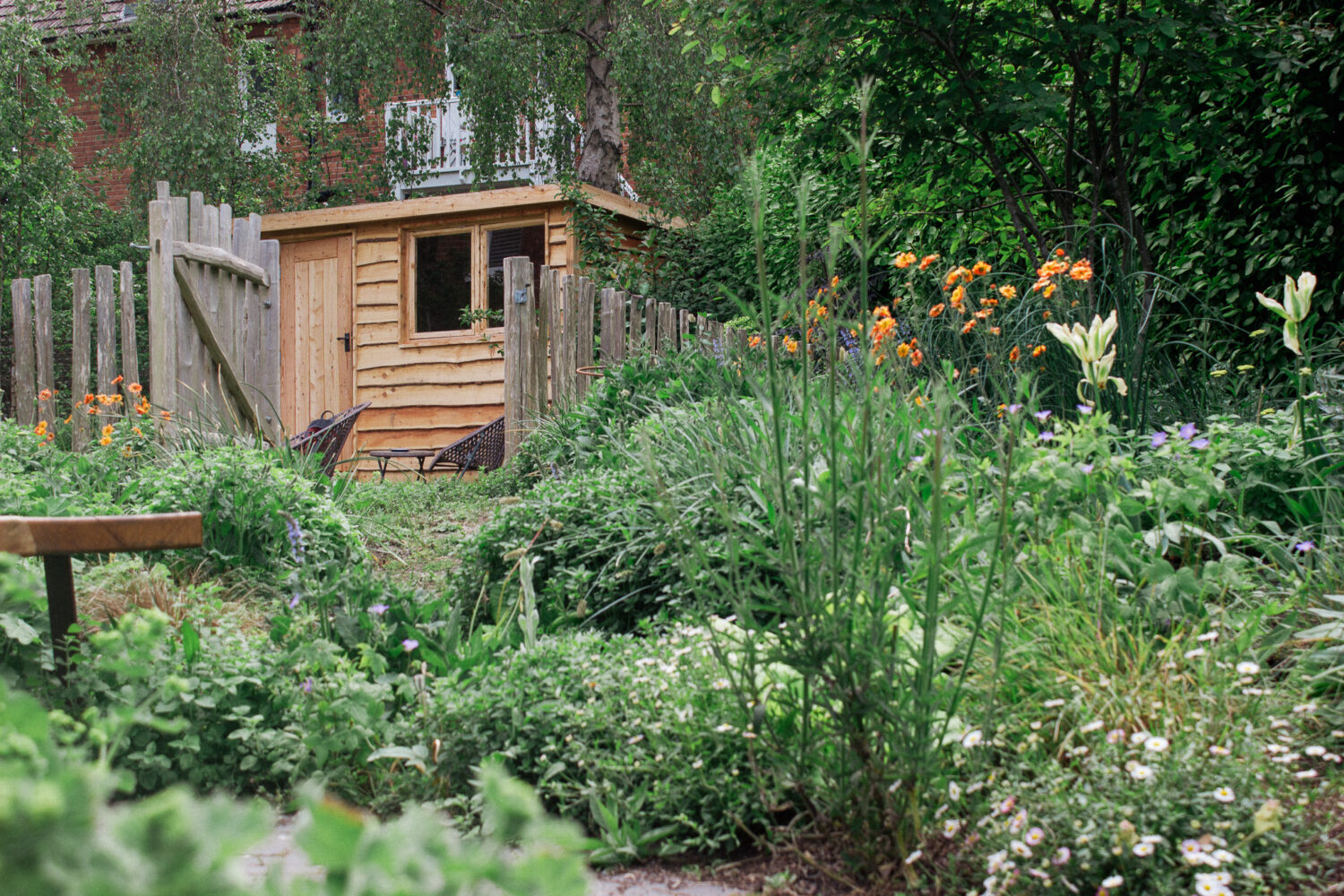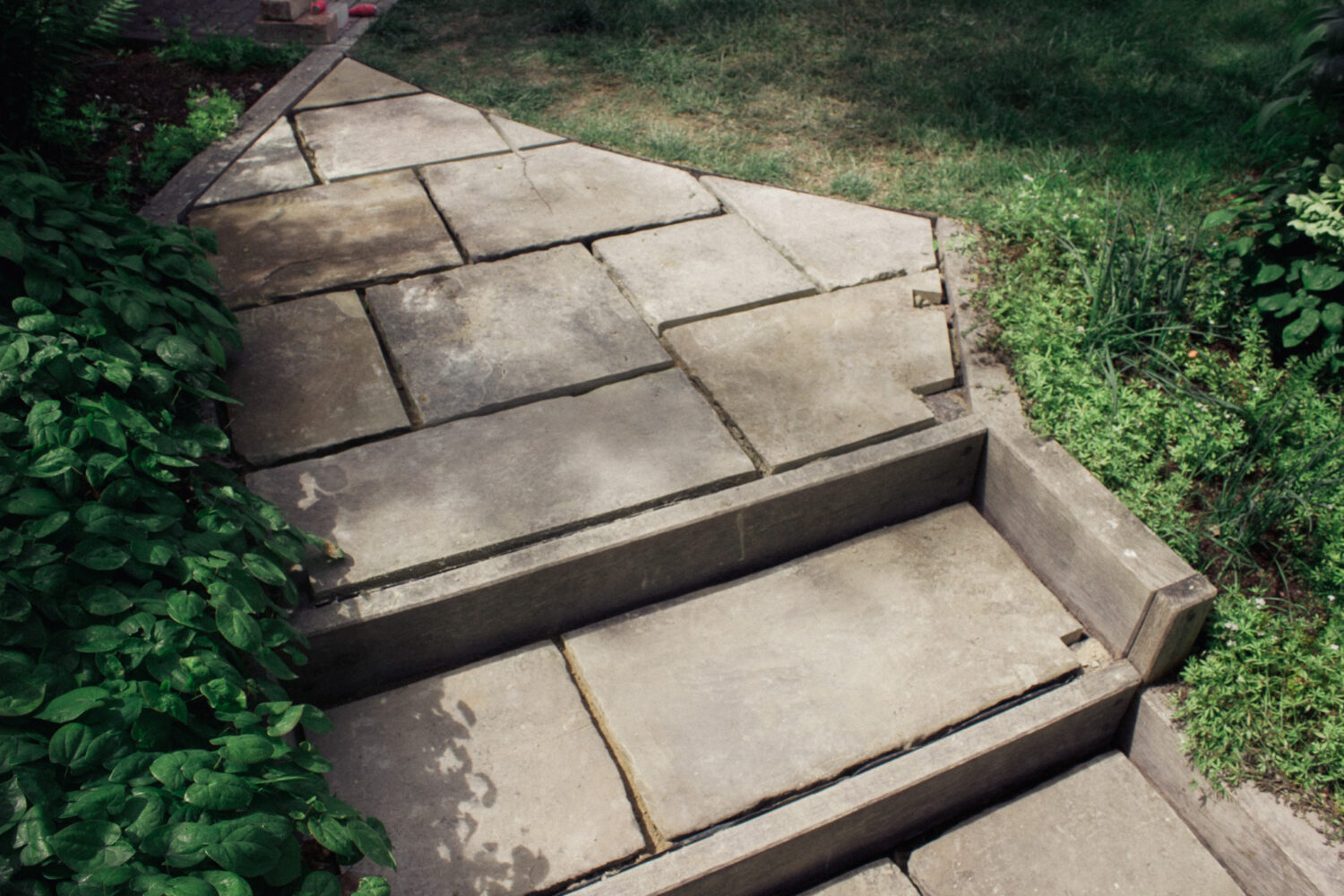Belle House
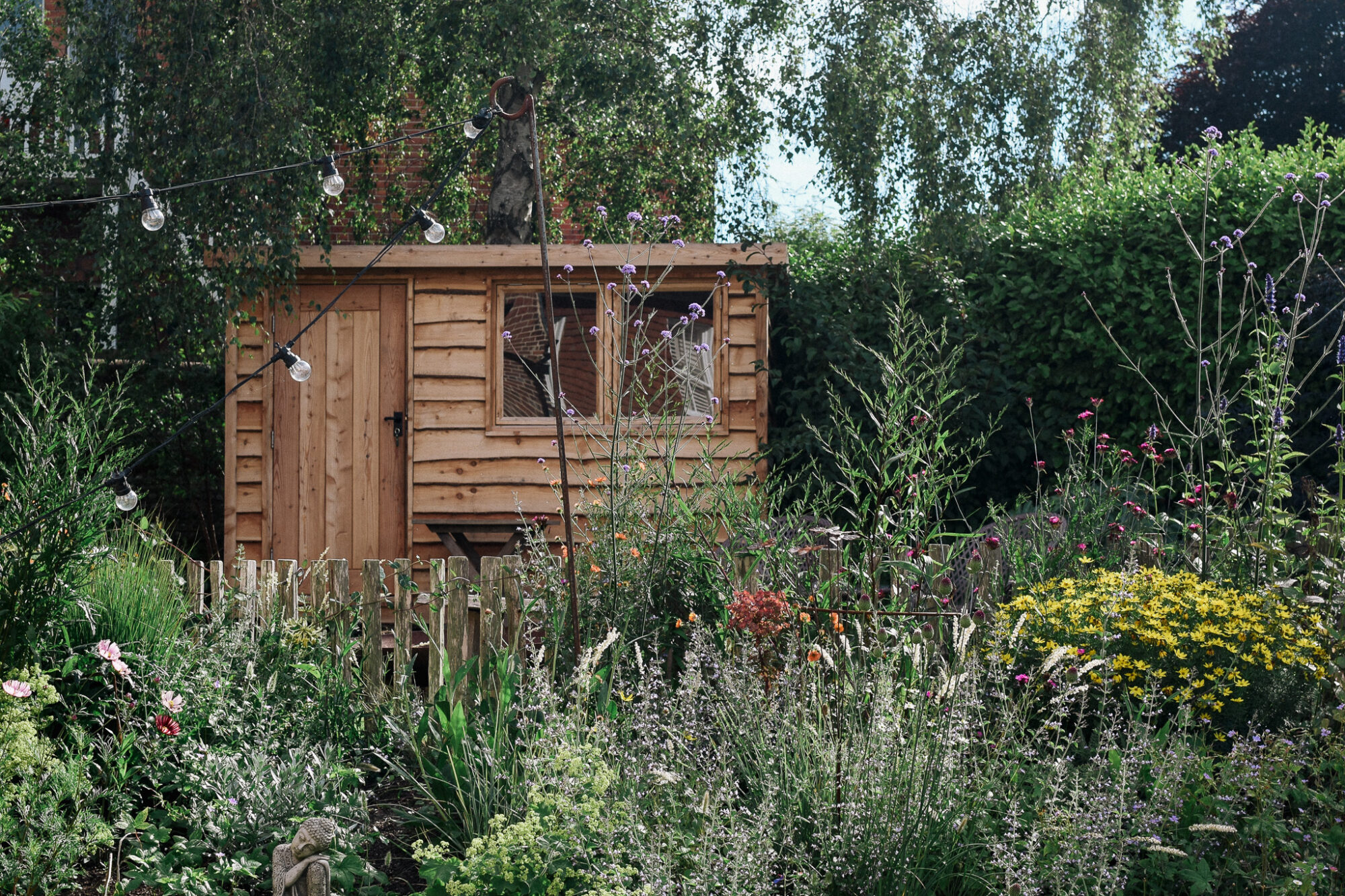
Designer
Stuart Leppard, The Garden Landscapers in collaboration with Alexis Montaigu Gardens
Makers
Rich Ely, Greenwood Craftsman
Website: greenwoodcraftsman.com
Insta: @greenwoodcraftsman
Ben Thorne, Carpenter
Insta: @ben.thorne.carpentry
The Brief
Our clients inherited an unloved garden when they bought a recently refurbished Grade 2 listed Georgian house with Victorian extension. Unsympathetic, concrete driveway block pavers were used to surface the space and thoughtless terracing left no room for meaningful use. The most natural seating areas were exposed and overlooked by neighbours.
We were commissioned in collaboration with good friend and associate Alexis to transform the space with:
- Abundant naturalistic planting with colour throughout the year
- More private and secluded seating areas
- A more intimate and interesting journey between its parts
- A bespoke timber framed building
- A more robust part of the garden for dogs, separated from more intricate and diverse plantings
- A more sympathetic pallet of materials that reflected the architecture of the building
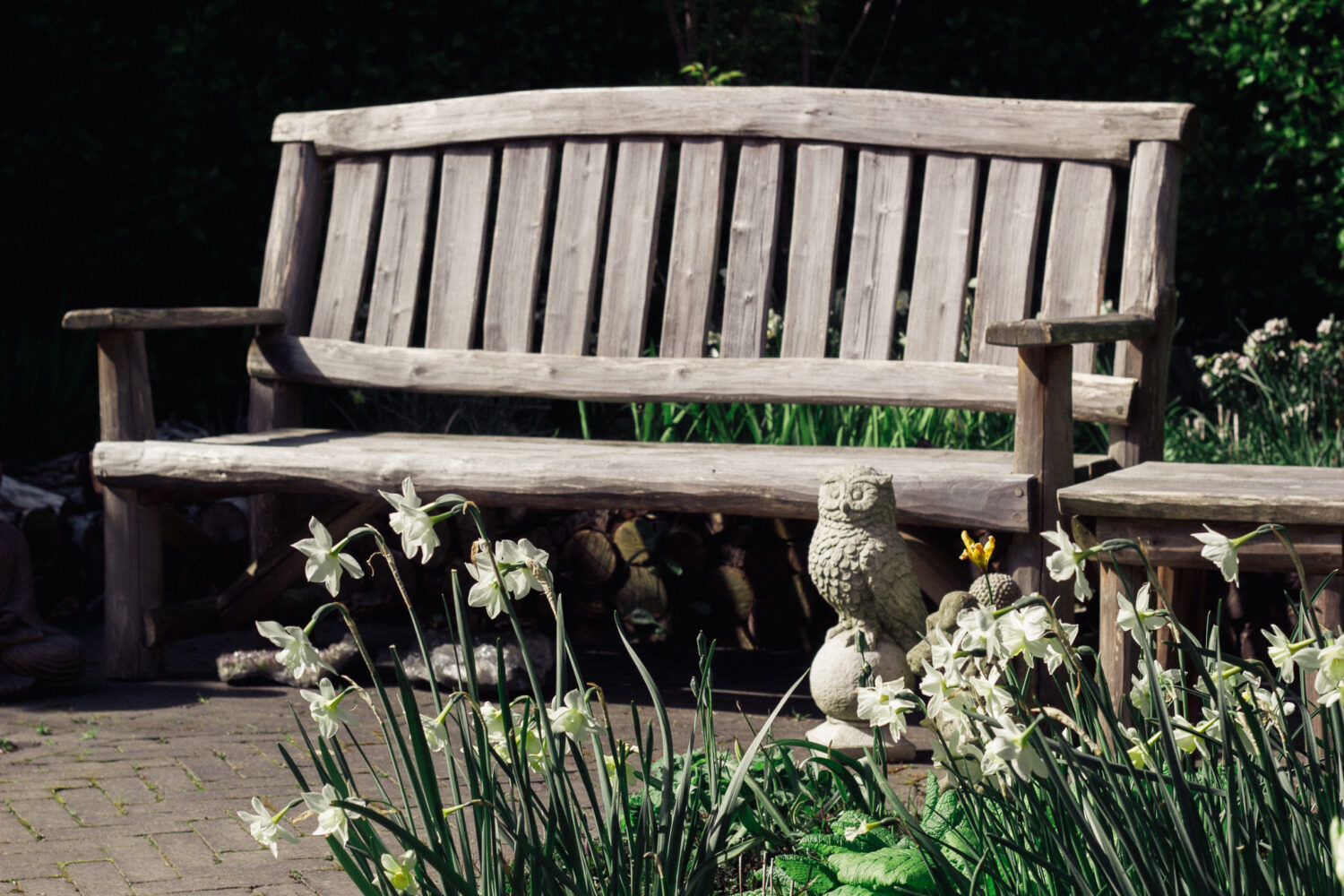
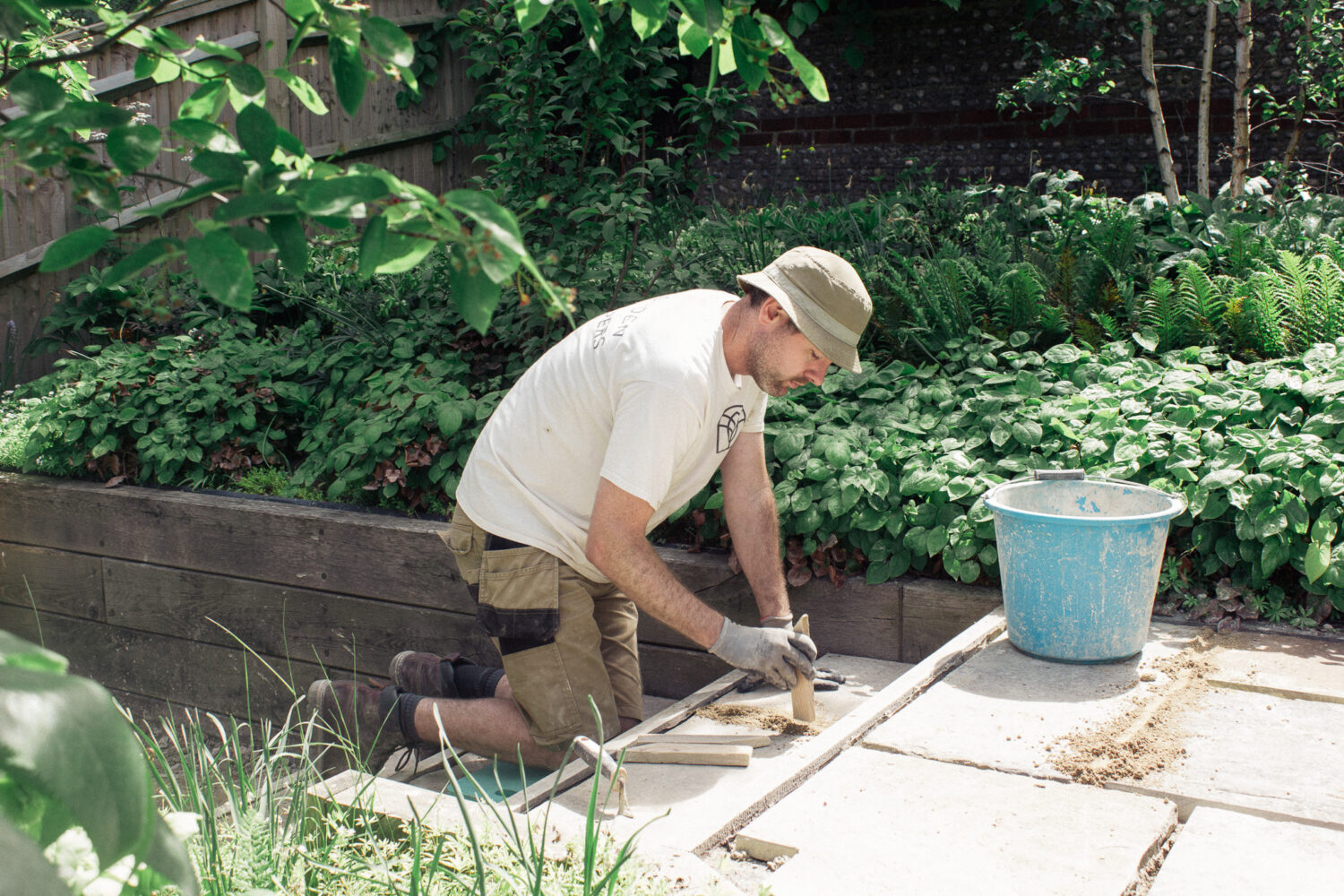
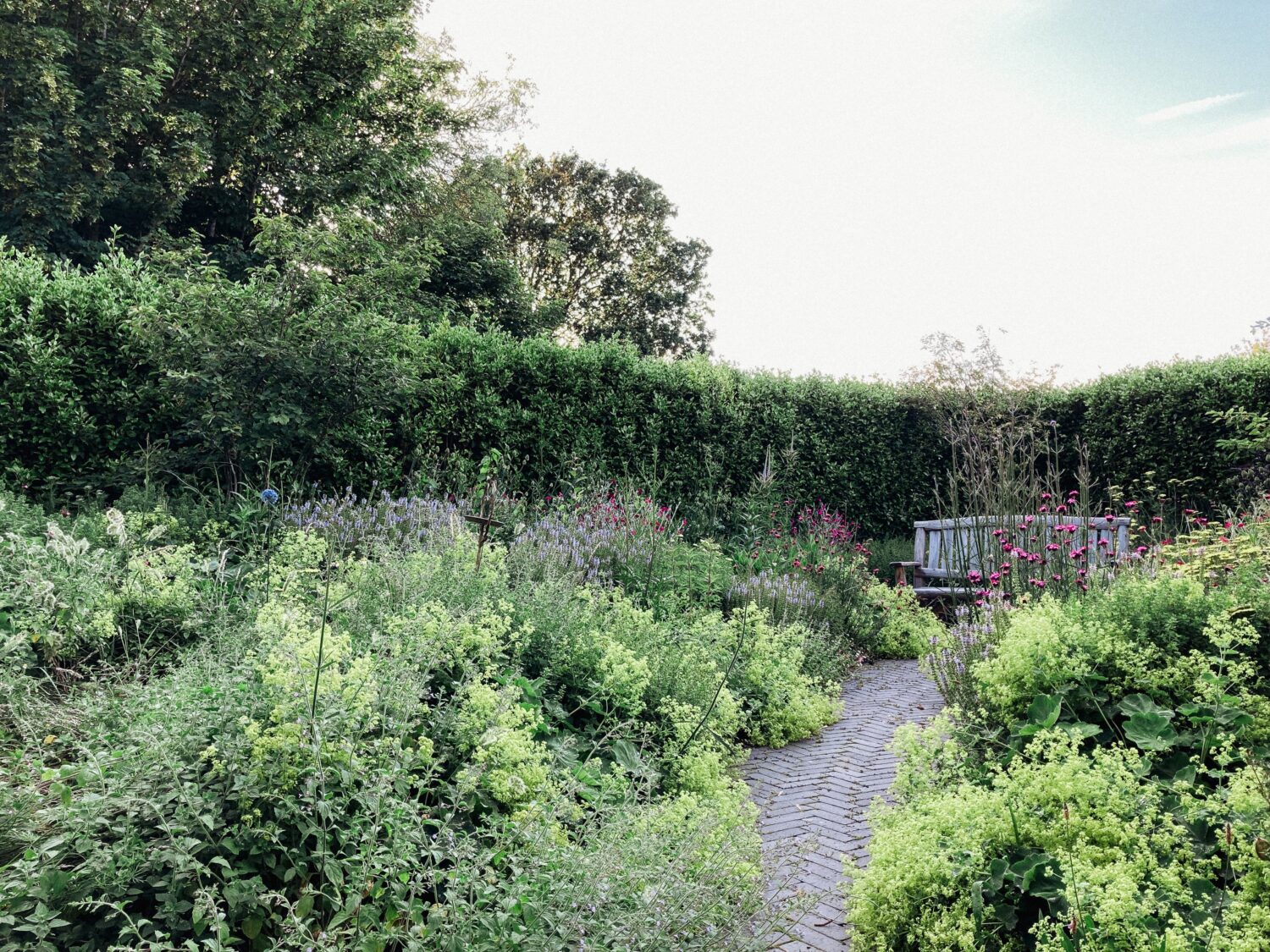
Our Role
Garden Designer and Landscape Gardeners
How we met the brief
Through clever groundwork, we managed to shape the upper area of the garden into two levels, dropping one seating area to make it more private, helped by immersive planting.
These two areas are separated by a simple chestnut staked fence which are softened by Honeysuckle. On one side, dynamic planting creates year-round interest, on the other a more restrained pallet withstands pressure from the clients’ dogs. We ensured continuity in the planting scheme between the two sides so the garden felt like one, cohesive space.
A darker brick paver was chosen to pick out the ‘blue’ header bricks in the house, characteristic of the local, historic brickmakers. Reclaimed York stone was chosen as a suitable heritage material that would’ve been common for buildings of this stature in the past.
Highlights
Creating a depth of experience in the garden by transcending just its aesthetic design and reintroducing life. We transformed dead soil caused by insensitive groundworks prior to our involvement by adding organic matter with careful groundwork. Within days an abundance of worms and insect life had returned.
We heard the reverberation of bees and pollinators replace the silence of a garden that had nothing to offer. We watched birds now nest in the existing hedge and rest on the branches of the planted trees. Seeing a Humming-bird Hawk-moth for the first time in one of our gardens was very exciting.
Environmental Credentials
Chestnut from a woodland 5 miles away was used throughout in fences, gates and furniture. Rich Ely harvests his coppices on a rotation that allows them to regenerate for many years. The cut stools regrow vigorously, taking up far more carbon dioxide than a newly planted tree. He cuts and shapes the material by hand using traditional tools and methods without the need for fossil fuel. The durability of the timber gives it a long-life span in the garden.
Most of the York stone slabs used for the patio were reclaimed from a site thirteen miles away.
A total of eight trees were planted in the garden to provide privacy and intimacy. Four Silver Birch were planted to give the impression of being offspring to the mature, existing tree. They provide food and habitat form more than 300 insect species. The three Amelanchier trees have nectar/pollen rich flowers known for attracting bees and other pollinators and their berries are enjoyed by both people and birds.
Planting trees where we can helps combat global warming by absorbing carbon dioxide and removing and storing carbon while releasing oxygen back into the air. We did lose two existing Elms to Dutch Elm disease, but had the material milled so we could use it for the internal fit out of the bespoke shed that replaced them. This shed was built from locally and sustainably sourced Larch ‘in the green’ requiring no additional industrial input or product.
